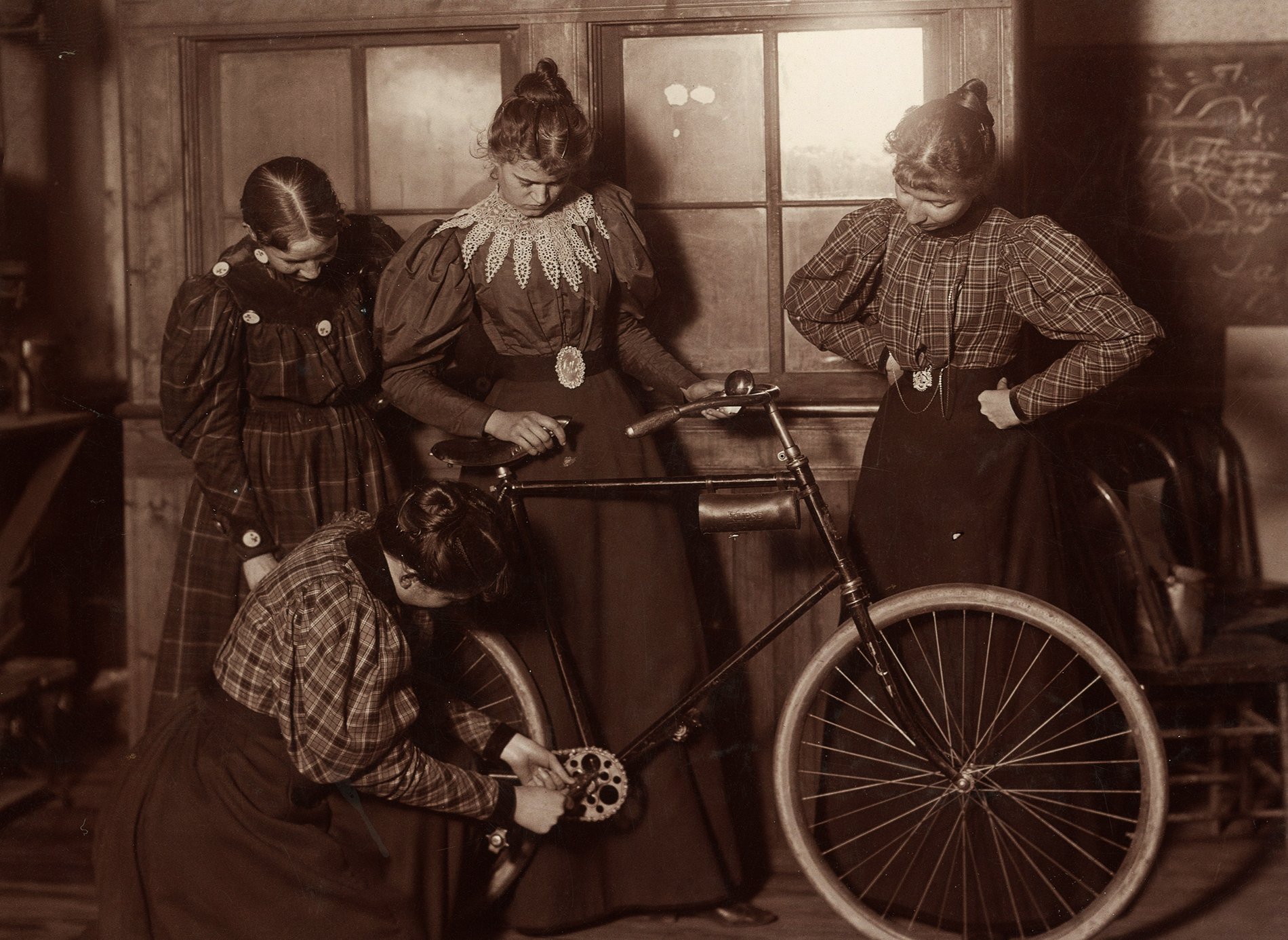
A young woman repairs a bicycle while three others watch and help, c. 1895. From Montana State University Library, via Wikimedia Commons.
Along the rutted, moonlit roads just north of Leeds, England, a cyclist in skirts pedals to her local pub. After a pint, she returns the six hilly miles home, racing against her best time.
The pages of the “Commonplace book and diary” of Ada Florence Smart capture ordinary moments in the author’s life at the turn of the 20th century.1 Recording nearly daily bicycle rides in the Leeds, England region between 1893–1896, most of the diary is, well, commonplace. There is no great tension, no narrative arc that offers the diarist heroic status, clarity, or redemption. Instead, Ada details the landscape, the time of day, the errand at hand, the people she meets along the way. It is an intimate window into a stranger’s world—the kind of intimacy that is propelled primarily by the mundane. I know the route she took to see her dressmaker, the time she spent calling on a friend, the weather on the second Tuesday of April, and the new cape she wore for the first time on the 29th after attending—despite being a woman—a “smoking concert” with friends.
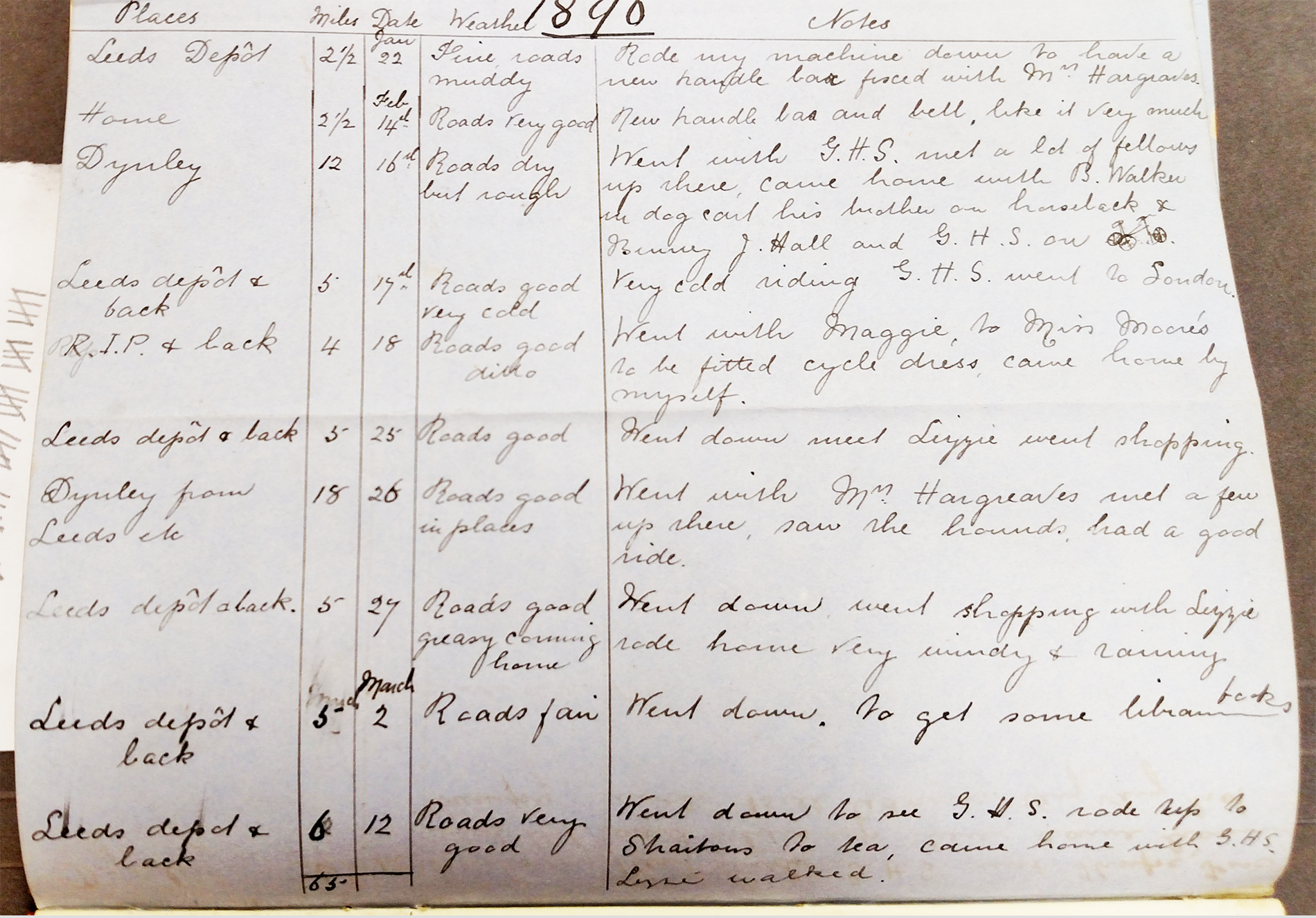
First page of 1896 cycling record in ‘Commonplace book and diary, [c.1850]–1896.’ Reference Number MSS.328/N28/8/1, National Cycle Archive, Modern Records Centre, University of Warwick. Printed with permission from the Cycling History and Educational Trust (272792).
As a feminist historian studying women cyclists of the 1890s, I immediately knew the value of this diary when I stumbled upon it in the National Cycle Archive at the University of Warwick’s Modern Records Centre. The 1890s bicycle boom was explosive but short-lived, capturing the imagination of the UK, western Europe, and the US as a symbol of emerging technological and industrial strengths. The bicycle had a profound impact on transportation, particularly road development, but it also highlighted existing social boundaries around race, class, religion, and gender at the turn of the 20th century—and eventually helped to transgress them. Composing about a third of all early cyclists, women riders were the subject of tremendous criticism as well as praise for the simple decision to mount a bicycle. The bicycle, a technology of mobility, became symbolically attached to the idea of the modern New Woman and her liberation from social norms around gender and self-determination. This liberated woman on a bicycle had the power to go places.
A cycling diary like Ada’s is a historical gold mine: a first-hand account of the impact of the bicycle boom on the life of one woman and her community. As I paged through the diary, I also began to feel a personal connection to Ada and her daily rides.
As a cyclist myself, I am no stranger to the liberating mobility that a bicycle can offer. In fact, I first came across Ada’s diary in the middle of a three-month cycle tour across the UK and western Europe. By the time I arrived at the National Cycle Archive, I had bicycled over one thousand miles through Scotland and northern England—much of the landscape described in the diary—and I had another two thousand miles to go before the end of my journey.
Reading the diary while on my own cycle tour, I felt like our worlds had merged. Rather than insist upon maintaining some objective distance between this long-dead woman and myself, I leaned into the connection I felt as a fellow woman cyclist, and used my lived experience as a lens through which to understand her life. I had cycled the same stretches of meandering country road as she had, felt the same thrill of the wind on my face and the same dread of a slipped chain or a blown-out tire.
It can be risky to blur the line between past and present, to insert ourselves into the past or try to resurrect ghosts. As researchers we are usually concerned with carefully untangling one ancestor’s life from another, diligently distinguishing fact from fiction. But I was drawn to the rush of my shared sensory moment with Ada. I threw myself into an obsessive frenzy of research, learning everything I could about her, her family, her neighbors. I traveled her cycle routes, visited her neighborhoods, counted the number of windows on her house, and drank in the pub she frequented. I wanted to experience the things she had seen, tasted, and smelled. A certain tree, the stench of sheep manure, a mediocre beer on tap.
This kind of connection and deep affection for a research subject can only grow when we are lucky enough to find a record with more to it than a name, date, and place of birth. In fact, in this particular case, I initially lacked those three basic details entirely (that’s another story you can read about here). But even without some of the most basic information about this diarist’s identity, I still was able to piece together a robust understanding of her daily life and map the routes she traveled.
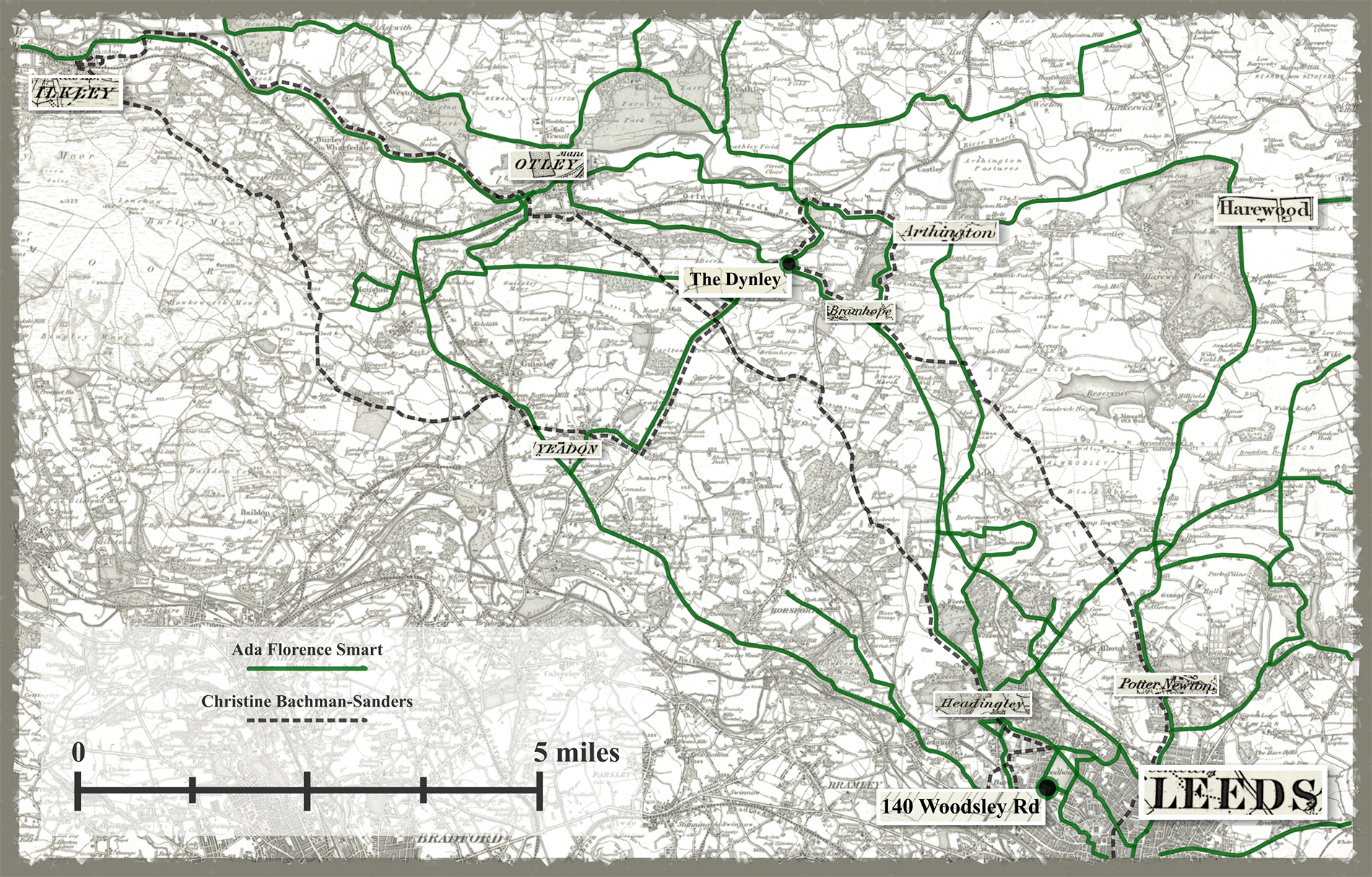
This map depicts the interaction between the Ada’s local and weekend rides (solid line) with a portion of my travels (dotted line). My GPS-tracked route from March 2018 weaves in and out of the estimated routes Ada took between 1893 and 1896. Ordnance Survey, One-inch Revised New Series, England and Wales: Sheets 61–3, 69–71, 77–9, National Library of Scotland, Revised 1896, Published 1898, ed. Ian Bachman-Sanders, 2020, https://maps.nls.uk/index.html. Reproduced with the permission of the National Library of Scotland.
It’s rare that we get the opportunity to understand the lives of our ancestors or research subjects with such intimacy. When the opportunity arises, why not saddle up and see where the road takes us?
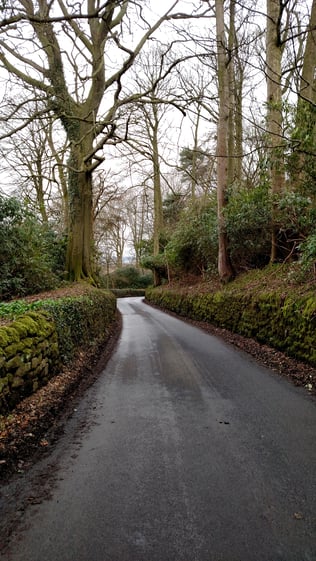
Photograph of Creskeld Lane, Leeds, England, March 2018. Author’s personal collection.
Further Learning
Free Video Lecture: Researching Women in Archives
Women make up 50% of your ancestry, yet their lives, experiences, and even complete names are all too often forgotten by written history. When they survive, diaries, letters, account books, family bibles, samplers, organization records, and more can reveal more about a woman’s daily life than any government document. Archivist Judy Lucey discusses how these unique records and manuscripts can be used to piece together a family story, and how digging in the archives can hit genealogical gold.
Stories from the Archives: Diaries
Diaries are important primary source records for genealogists, historians, and family members alike. Even if it’s not written by your ancestor, a diary can provide incredible insight into the daily life of an individual and a specific time and place. This video features just some of the diaries held by the R. Stanton Avery Special Collections and the Wyner Family Heritage Center at American Ancestors.
Free Guide: Getting Started with Old Handwriting
Many of us have stared at an old handwritten document and wondered, “What does that say? It looks like a bunch of squiggles to me!” The problem seems obvious: the handwriting is faded, and the groups of letters don’t resemble words. Do not despair. With a few simple techniques, deciphering old handwriting is something you can do.
Notes
1 National Cycle Archive, ‘Emily Sophia Coddington: Commonplace book and diary, [c.1850]–1896’, Modern Records Centre, University of Warwick, https://mrc-describe.epexio.com/records/NCA/1/13/1.
A ‘commonplace book’ was typically used to record poems, stories or other information that might serve to commemorate an important event, person or moment for the owner of the book. The first part of the diary, ascribed to Emily Sophia Coddington, is a ‘commonplace book’, in that it consists of transcribed poems and stories Emily and perhaps a sister of hers included in the book in the 1850s, when she was a girl. The second half of the journal is a cycling diary listed in the archival catalogue as authored by an unknown girl. This portion of the record is a gridded diary, listing dates, mileage, place names, weather and comments about hundreds of bicycle rides between 1893 and 1896. I identify the author of the cycling portion of the diary as Ada Florence Smart.
Share this:
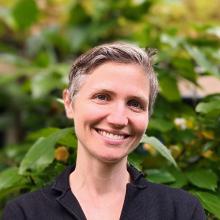
About Christine Bachman-Sanders
Christine holds a BA in Women's and Gender Studies from Middlebury College, an MA in Media, Culture and Communication from NYU, and a PhD in American Studies from the University of Minnesota. Her academic work is rooted in a feminist approach to historical and archival research, and relies substantially on genealogical records, particularly for research she conducted to identify the name of a long-anonymous cyclist and diarist located in the cycling archives in the UK. Christine views genealogical research as a way to build connections and empathy across communities, investigating how our families and histories interact. Areas of expertise: 19th and 20th century American and British history, crafting family history narratives, German fluencyView all posts by Christine Bachman-Sanders →